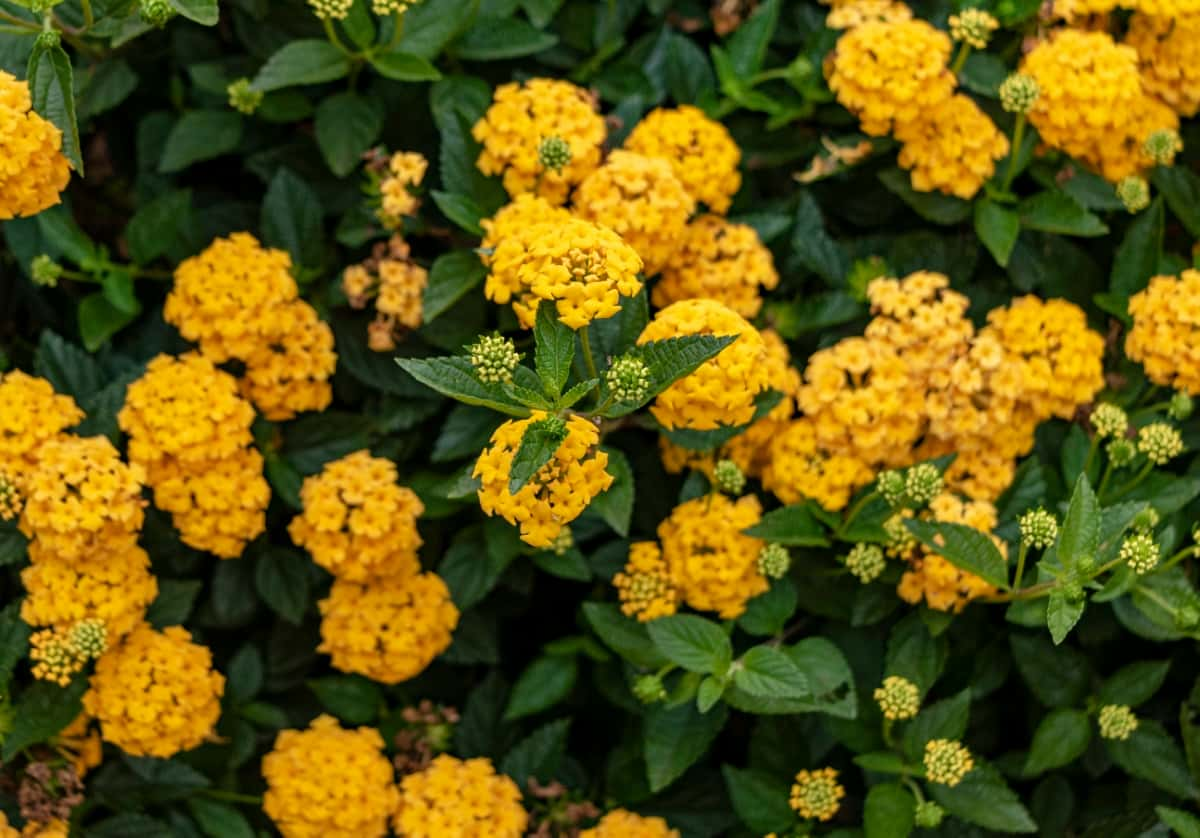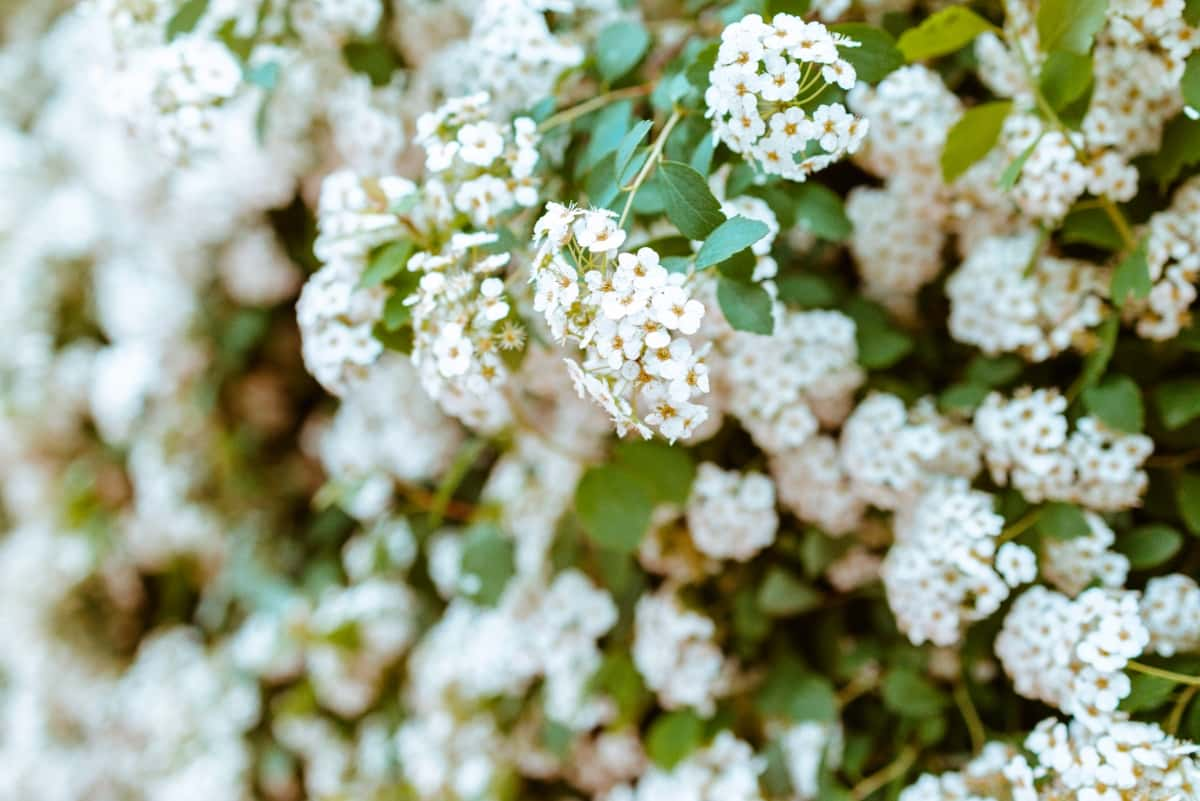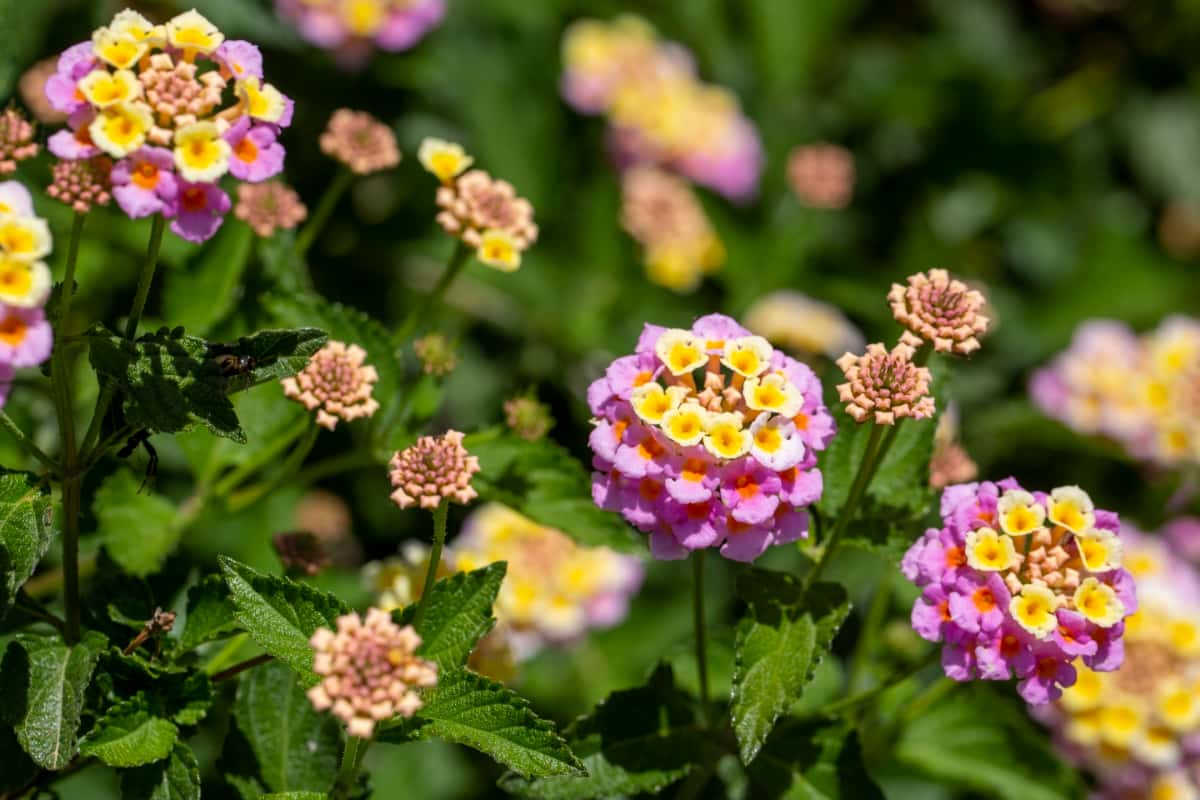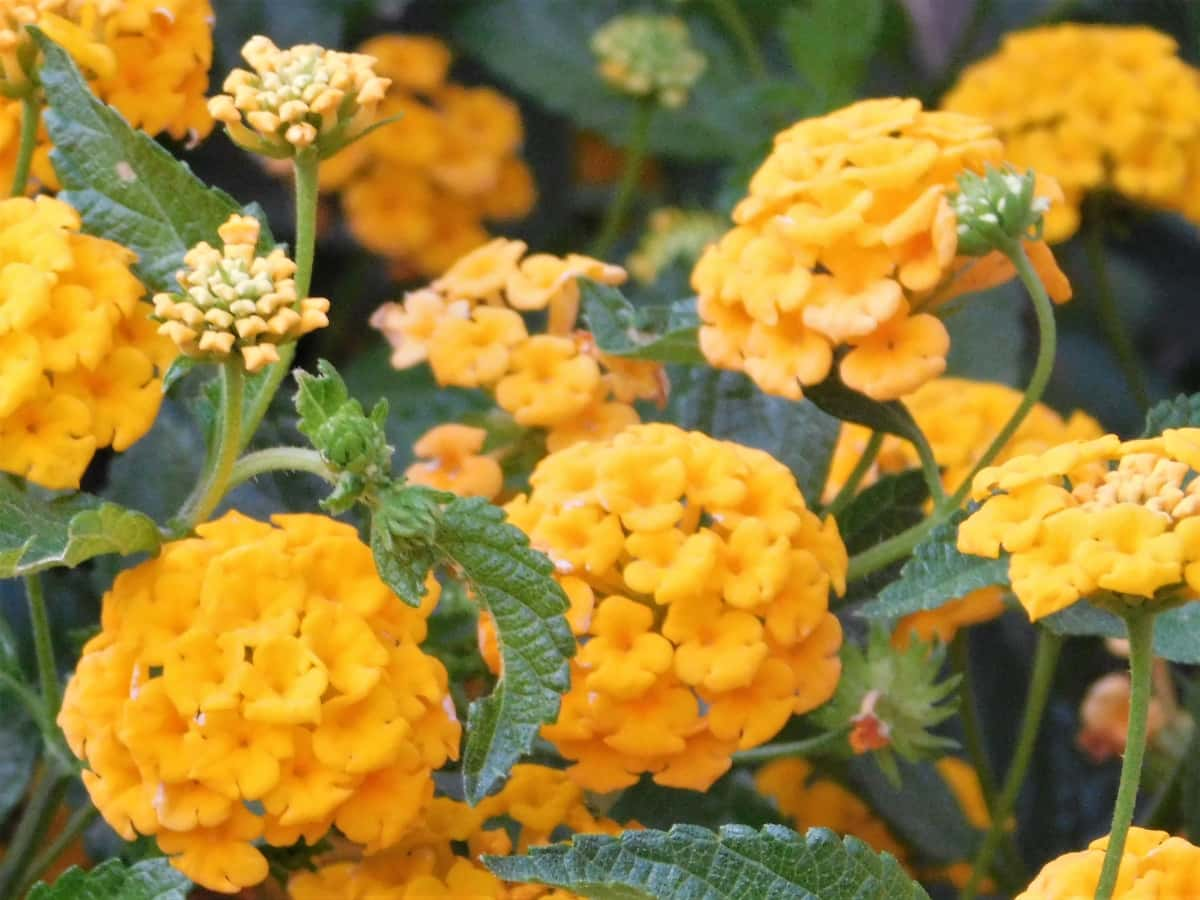Lantanas are popular flowering plants known for their vibrant blooms and low maintenance requirements. Several factors can contribute to Lantana not blooming, ranging from environmental conditions to cultural practices. Why is my Lantana not flowering? In this guide, we’ll explore 10 common reasons why your lantana may not be blooming and provide effective solutions to help you get your plant back on track.

10 Reasons Why Your Lantana is Not Blooming
Essential Care for Lantana
Understanding Lantana’s Basic Needs
Lantanas thrive in well-draining soil with a pH level ranging from slightly acidic to neutral (pH 6.0 to 7.5). They require full sunlight exposure, ideally receiving six to eight hours of direct sunlight daily. While lantanas are drought-tolerant once established, they benefit from regular watering, especially during periods of prolonged dryness. Additionally, occasional fertilization during the growing season with a balanced fertilizer helps sustain vigorous growth and abundant blooms.
Optimal Conditions for Lantana Growth
For optimal growth, lantanas prefer warm, sunny locations with temperatures ranging from 18-32°C. Frost-sensitive, they should be protected from freezing temperatures. Applying mulch around the plant base retain moisture and suppress weeds. While lantanas tolerate light pruning throughout the growing season, heavy pruning should be avoided in late fall or winter to preserve potential flower buds for the next growing season.
Lantana Sunlight Requirements
Lantana Sunlight Requirements for Blooms
These plants require ample sunlight, ideally receiving six to eight hours of sunlight daily, to stimulate flower production. As one of the causes for Lantana bloom failure, Insufficient sunlight can result in reduced flower production and overall poor plant growth.
Signs Your Lantana Needs More Light
If your lantana is not blooming as expected, it may indicate insufficient sunlight. Signs that your lantana needs more light include sparse or leggy growth, pale or yellowing leaves, and fewer flowers or a complete absence of blooms. How to get Lantana to bloom? Moving the Lantana plant to a sunnier location or pruning surrounding foliage to increase sunlight exposure can help address this issue and encourage better blooming.
Watering Your Lantana
Finding the Right Watering Balance
These plants prefer consistently moist, well-draining soil, but they are also drought-tolerant once established. Water your lantana thoroughly when the top one inch of soil is dry, ensuring that excess water can drain away freely. In hot, dry climates and during periods of prolonged drought, increase watering frequency to maintain soil moisture levels and enhancing Lantana flower production.
Effects of Overwatering and Underwatering
Overwatering can cause root rot, yellowing leaves, wilting, and stunted growth. It also increases the risk of diseases caused by fungus. On the other hand, underwatering can cause wilting, leaf drop, and reduced blooming as the plant struggles to cope with water stress. Both extremes can weaken the plant and make it more susceptible to pests and diseases.
Soil and Fertilization
Best Soil Types for Lantana: Soil Conditions for Lantana Blooming
Lantanas thrive in well-draining soil with a pH level of pH 6.0 to 7.5. Sandy loam or loamy soil types are the best choices, as they provide good drainage while retaining some moisture. Avoid heavy clay soils, as they can lead to waterlogging and root rot. Amending the soil with organic matter, such as vermicompost or aged manure, can improve soil structure and fertility, promoting healthy growth and blooming in lantanas.
Fertilizer Use: Dos and Don’ts
- When fertilizing lantanas, use the best fertilizer for Lantana flowers with equal parts nitrogen, phosphorus, and potassium.
- Apply fertilizer sparingly, following the manufacturer’s recommendations, to avoid overfertilization.
- Fertilize lantanas during the active growing season, typically from spring to early fall, and refrain from fertilizing during the dormant winter months.
- Avoid applying fertilizer directly to dry soil or foliage to prevent burning the plant.
In case you missed it: 10 Reasons Why Your Gardenia Buds are Falling Off: Prevention and Remedies

Pruning Practices for Lantana Plants
Pruning for Health and Bloom Stimulation
Regular pruning helps remove dead, diseased, or damaged growth, improving adequate air circulation and reducing the risk of pests and diseases. Additionally, selective pruning Lantana to encourage flowers by removing spent flowers and shaping the plant. Prune lantanas lightly throughout the growing season to promote continuous flowering and maintain the desired size and shape of the plant.
Common Pruning Mistakes to Avoid
One common mistake is pruning too late in the growing season, which can remove potential flower buds for the next blooming cycle. Another mistake is excessive pruning, which can weaken the plant and reduce blooming. Pruning more than one-third of the plant’s total growth at a time should be avoided. Additionally, using dull or dirty pruning tools can introduce pathogens to the plant, so always use sharp, clean tools when pruning your lantanas.
Temperature and Climate Considerations
Lantana’s Temperature Preferences: Temperature Effects on Lantana Flowers
Lantanas thrive in warm, temperate climates and prefer temperatures ranging from 18-32°C. They are sensitive to frost and cannot withstand freezing temperatures, which can kill the plant. To ensure optimal growth and blooming, provide lantanas with a suitable microclimate that offers protection from cold drafts and frost pockets, especially during the winter months.
Preparing Lantana for Changing Seasons
In colder regions, consider overwintering lantanas indoors or providing frost protection with blankets or mulch. Gradually acclimate lantanas to indoor conditions by bringing them indoors before the first frost and placing them in a bright, cool location. In warmer regions, monitor soil moisture levels and adjust watering frequency as temperatures rise to prevent drought stress.
Lantana Pest and Disease Control for Blooms
Identifying and Managing Common Pests
Lantanas are generally resilient to pests, but they may occasionally face issues with aphids, whiteflies, spider mites, and caterpillars. Inspect your Lantana plants regularly for signs of pest infestations, such as distorted growth, sticky residue (honeydew), or visible insects. To manage pests, consider using insecticidal soap, neem oil, or natural predators like ladybugs. Pruning infested parts and maintaining good garden hygiene can also help prevent pest problems.
Disease Prevention and Control
Lantanas can be susceptible to fungal diseases like powdery mildew, leaf spot, and root rot, particularly in humid conditions or when overwatered. To prevent diseases, avoid overhead watering, improve air circulation around plants, and ensure proper drainage. Remove and dispose of infected plant debris promptly. Fungicides may be necessary for severe outbreaks, but preventive measures are often more effective.
The Importance of Plant Maturity
Age-Related Blooming Patterns
The blooming patterns of lantana plants are influenced by their age and maturity. Young plants may take some time to establish their root systems and reach maturity before producing abundant blooms. During this establishment phase, focus on providing optimal growing conditions, including adequate sunlight, water, and nutrients, to support healthy growth and promoting blooms in Lantana in the future.
Patience with Newly Planted or Young Lantana
Newly planted or young lantana may initially focus on developing their root systems rather than producing flowers. It’s normal for these plants to take some time to settle in and start blooming consistently. Continue to care for them properly, and with patience, they will reward you with abundant blooms as they mature.
In case you missed it: 10 Reasons Why Your Angel Trumpet is Not Blooming: Remedies and Treatment

Seasonal Care and Adjustments
Seasonal Tips for Continuous Blooms
Adjust care routine based on the changing seasons. During the spring and summer months, when lantanas are actively growing and flowering, provide regular watering, adequate fertilization, and pruning to promote healthy growth and promoting blooms in Lantana. Regularly deadhead the spent flowers to promote new blooms and maintain a tidy appearance. Continue deadheading to prolong blooming as long as possible before the onset of frost.
Winter Care for Lantana
During the winter months, lantanas may require special care to survive cold temperatures and frost. Consider overwintering them indoors in a cool, bright location, such as a greenhouse or sunroom. Before bringing plants indoors, inspect them for pests and diseases and treat them as needed.
Cover plants with blankets or frost cloth during cold snaps to shield them from frost damage. Monitor soil moisture levels during the winter months and water accordingly. Allow the soil to dry between two successive waterings. Avoid fertilizing lantanas during dormancy, as they require less nutrients during this time.
In case you missed it: 10 Reasons Why Your Daffodils Not Flowering: Remedies and Treatment

Conclusion
Troubleshooting Lantana blooming issues is essential for promoting healthy growth and vibrant flowers. By implementing the 100% effective solutions provided for common flowering issues, you can ensure your lantana thrives and continues to adorn your garden with its beautiful blooms year after year.
- Feed Your Flock for Less: Top 10 Tips to Save on Chicken Feed
- Ultimate Guide to Ossabaw Island Hog: Breeding, Raising, Diet, and Care
- Hatching Answers: The Top 10 Reasons Your Chickens Aren’t Laying Eggs
- Eggs and Economics: Breaking Down the Cost of Raising Backyard Chickens
- Defend Your Greens: Proven Methods to Keep Iguanas Out of Your Garden
- Ultimate Guide to Cinnamon Queen Chicken: A Comprehensive Guide for Beginners
- Ultimate Guide to California Tan Chicken: Breeding, Raising, Diet, Egg-Production and Care
- Ultimate Guide to Marsh Daisy Chicken: Breeding, Raising, Diet, and Care
- 10 Types of Chicken Farming Businesses You Can Start for Profits